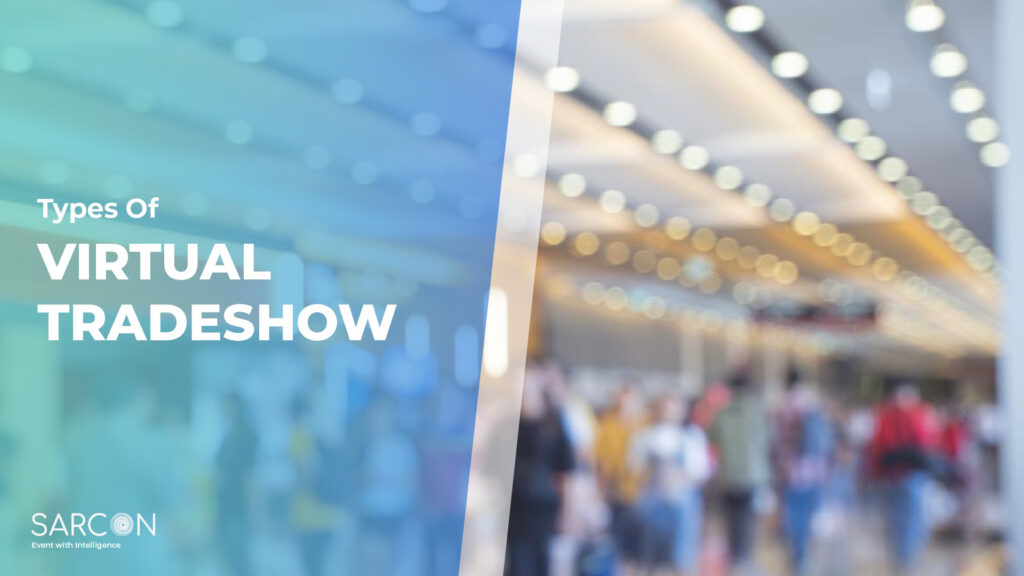Virtual trade shows are a robust B2B sales and marketing arsenal tool. In this age of technology, virtual trade shows have allowed businesses to save money on travel and shipping costs while still generating qualified leads. Additionally, the lower barrier to entry for these online events results in a broader and more diversified audience.
According to Statista’s June 2021 research, due to the global spread of the coronavirus (COVID-19), several exhibition companies cancelled in-person events and moved to online event platforms in 2020 and 2021. 59% of trade shows in Chile were planned as virtual events while 50% of trade shows in Italy were organized as hybrid events.
What are Virtual Trade Shows?
Virtual trade shows are carried out online, precisely mimicking a physical event. Online event platforms provide the ease and technological prowess to provide a similar experience virtually to a physical event.
Sellers, for instance, have the liberty to customize and develop virtual booths, integrate a shopping cart, host pre-recorded and live webinars in real-time, schedule meetings with prospects, and provide a networking lounge. (We’ve also made a handy list of the best virtual event platforms.)
Huge savings top these benefits on exorbitant venue costs, expensive commutes, and massive overheads.
A globally available virtual environment presents the opportunity to showcase oneself to a global audience. The hybrid aspect of this new technology enables the exhibitors the power to showcase their products and services both in-person and online.
Trade shows have now advanced to the next level, where now they have the option to provide both online and in-person shows in 2022, thanks to hybrid events technology. Virtual trade shows can give exhibitors and attendees the best of both worlds.
Multiple steps drive your B2B sales and marketing focus to virtual trade shows.
1. Familiarize yourself with the existing types of online show formats.
2. Decide which format best suits your business.
3. Design and develop a strategy and ensure you get great ROI.
4. You need to utilize the right online tools and strategies available.
5. Maximize your success at the show with the help of these tools and make your virtual booth stand out.
Virtual Motor Show
The automotive industry is exploring and experimenting with hybrid technology in their cars and events! Virtual tradeshows help them market new and improved cars to a global audience in real time. Car enthusiasts, journalists, and prospective buyers who cannot attend the show physically can learn more about the newly launched models through videos, 360-degree views, and live presentations.
Manufacturers and dealers further engage with their customers with the help of webinars and chat tools to answer their queries. Q&A sessions and polls held during these sessions help gather valuable data and feedback.
Exhibitors can fully customize their booths and the virtual environment. These shows become the perfect place for publicly exhibiting current and upcoming car models. Interested attendees can chat with sales representatives and attendees through live audio and video chats.
Technology Trade Show
Companies involved in public healthcare and technology are developing products that address existing health and safety concerns. Contactless technology is a prime motivator here.
Companies are bringing in SMEs to position the brand as a leading solution provider in their niche. Virtual tradeshow, with the help of hybrid technology, helps them reach a global audience.
As an organizer, you must set up virtual booths for each company. They can include individual presentations and material to add.
Additionally, the gamification of your event will help keep your audience engaged. Make sure to have a leaderboard that finds and showcases winners for special company gift hampers or event bags.
Create a virtual networking lounge where technology providers can find highly relevant prospects to build their professional network. It will become easier to do this with the help of a matchmaking tool.
Provide the audience with a complete schedule of live webinars and Q&As to keep them engaged and establish value.
Meeting-focused Trade Show
Some trade show organizers focus on building relationships online while creating the best environment for their exhibitors and visitors. These tradeshows typically feature a large exhibit hall with booths representing different companies, as well as a variety of conference sessions and networking events. Meeting-focused tradeshows can be either industry-specific or general interest.
Buyer-focused Trade Shows
Some show organizers are shifting their focus to creating a virtual catalogue where the buyers can browse virtual booths and submit inquiries to manufacturers, wholesalers, and distributors through an online platform.
Private Invite-only Virtual Trade Shows
Organizers find a certain amount of risk with virtual trade shows where unqualified buyers and exhibitors can access each other through these online platforms. Certain companies sometimes make most of their virtual events ‘invite-only.’
Virtual Food Show
B2B vendors and wholesale food providers can leverage virtual food shows to engage hundreds of thousands of global chefs, restaurant owners, retail buyers, and event hoteliers. Furthermore, exhibitors can get a customized booth to share and promote their brand stories, services, catalogues, and new products.
Visitors can place real-time orders and continue communicating with the sales representatives with live chat and other communication tools.
Buyers can complete their purchases by saving items to their carts and making payments through integrated e-commerce flows.
Trade Shows with Short Duration with Extended Access
Bringing people together with an online platform for specific days is an efficient way of doing business. It presents an opportunity to extend the open period for the event.
Long Duration Trade Shows
Going virtual also means that one could increase the overall duration of the online event. However, doing this during a physical tradeshow would mean high costs and a negative environmental impact. This gives extended access to the audience.
Virtual Product Launch
A product launch is a trade show where companies can introduce a new product to the global market. The potential audience for a virtual product launch is considerably wider than a traditional one. Either live or prerecorded webinars are a powerful tool for businesses to spread information about their newest offerings to consumers.
Product launches aim to create awareness about the product in the industry, including the company itself, and with prospective buyers.
Features like adding a cart to drive sales as more people learn about the product can boost the event’s ROI. Attendees can place an order directly from within the exhibit booth.
Link your product pages so attendees can order directly from your website immediately. With the help of the virtual tradeshow platform’s analytics feature, you can generate live results about how attendees engage with your product.
Attendees can also directly ask questions about pricing and product capabilities in the chatroom. Companies can deliver webinars to share product demos, offers, and deals.
Conclusion
Virtual trade shows and events are powerful tools in your sales and marketing channels. They save businesses the expense of costly travel while increasing the number of high-quality leads and contacts they may pursue.
Cutting-edge event technology platforms like Sarcon can host events of all sizes regardless of the number of attendees. Developed with years of experience and engineering prowess, a platform like Sarcon can drive compelling business leads toward an organization.



